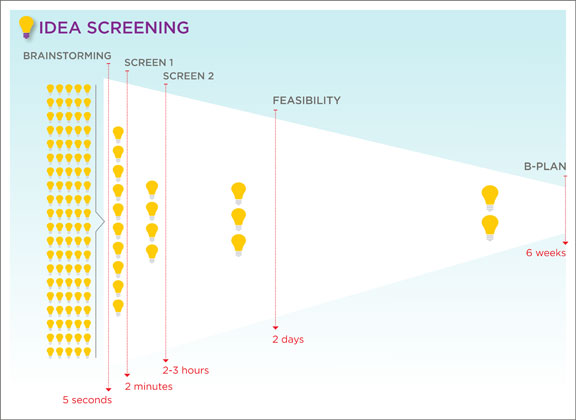
Once you’ve analyzed the pros and cons of starting a social enterprise and laid out the ground rules about what you can and will not do, it’s time to start the fun part: brainstorming what kind of social enterprise your nonprofit will undertake.
Brainstorming is a key idea here. Within the parameters of what fits with your mission and your assets, nothing is off the table. Talk about the community you serve, the people who support you, the neighborhood and the wider world. Who needs something, what do they need, and can we provide it?
Frame your discussions by asking:
- What do we do well that might be valuable to others?
- What relationships do we have that have business value?
- What do we own that have market value to others?
- What are others doing that might inspire an idea for us?
- What’s happening in the marketplace that we can take advantage of?
During this first phase, don’t make any value judgements whether an idea is good bad. Remember, a bad idea can be the foundation of a great idea.
Filter ideas in stages. Quickly eliminate the bad ideas, spending no more than 2 minutes on justifying them and voting on their merits. Go for clear winners, with the understanding that some good ideas may fall to the wayside.
The resulting list should be small about 10 ideas. Assign people to different teams. Each team will spend about two to three hours discussing the ideas.
Meet as a group and filter the list to no more than three ideas, asking “business” questions about potential market, risks, and revenue.
- What is the potential for generating “big” bucks?
- Will we need a “big” investment to launch? (ie hire new staff before $ in; $50K technology investment)
- Is anyone enthusiastic? Who will champion the idea?
- Do revenue and expense assumptions make sense and are they realistic?
- Can risk be managed?
- Can we pilot on a small scale?
Stage 3, for each idea that makes the cut assign a team to develop a case for moving forward, which should take about two days.
Management should determine the criteria important to their organization for evaluating ideas.

Click here for a PDF of sample decision matrix.
The final stage is writing a full business plan for one or two ideas that meet your criteria.
You need to be excited. You need to want the project to succeed and be willing to take some risks. That’s what entrepreneurs do every day: Take risks, fail a bit, revamp their plan, and take another chance at success.
Nonprofits aren’t used to the experimental notion. They’re want very much to succeed on the first try, to make a difference right from the start … and funders often require this.
But when starting a social enterprise, you become part of a different culture, a culture in which failure is the way you learn. If people don’t like blue, offer them yellow. Yes, you’ll make a business plan but the business won’t evolve the way you planned.
Think mission-consistent. Think flexible. Be excited.
What else should nonprofits consider when starting a social enterprise?
If you liked this article, you may also like:
5 Tips To Ensure That Your Nonprofit’s Social Enterprise Will Succeed
Could Starting a Business Venture Help Your Nonprofit?
